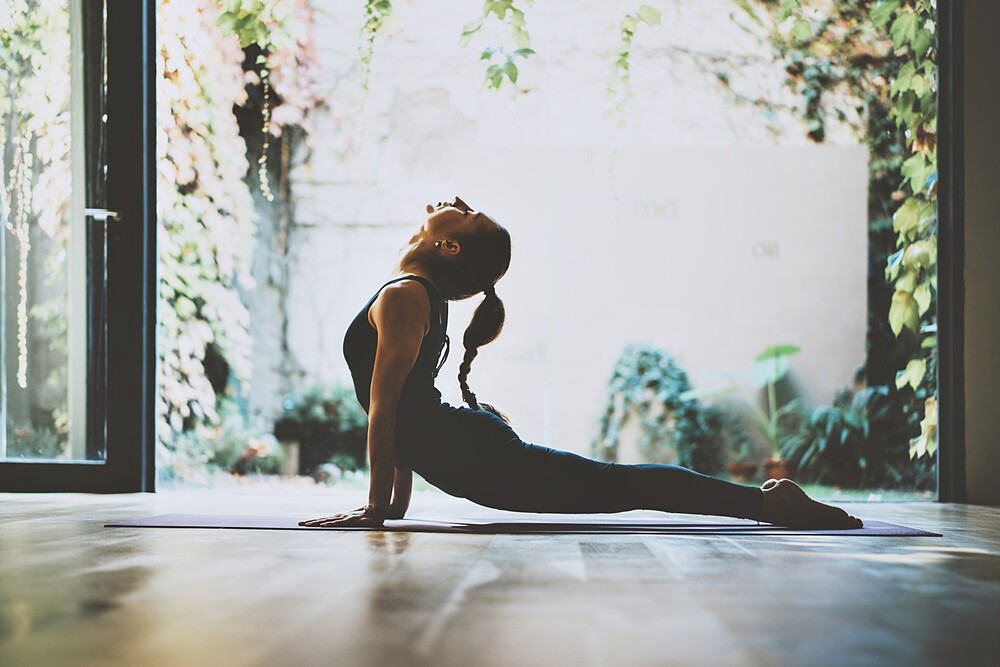Hatha Yoga is probably one of the most famous yoga styles worldwide. Here we explain the advantages of Hatha Yoga and how it works exactly.
What is Hatha Yoga?
Hatha Yoga is probably the best known of all yoga styles worldwide and puts asanas (movement) and pranayama (breath) in the foreground – but meditation also plays a role. The yoga style includes many classical yoga exercises such as the Sun Salutation or the Looking Down Dog and is therefore especially suitable for beginners. The term comes from Sanskrit and is composed of “Ha” (sun, power) and “tha” (moon, silence) – so Hatha Yoga is supposed to unite two actually opposing forces.
For Hatha Yoga there is even a kind of basic work, the so-called Yoga Pradipika. Translated, Pradipika means lamp, lamp or light. Just like Hatha Yoga as a style itself, Yoga Pradipika is probably the most famous scripture of Yoga worldwide.
What are the advantages of Hatha Yoga?
Hatha Yoga focuses on flowing, calm movements and breathing exercises, which serve primarily for relaxation. This is what makes this style of yoga so attractive for beginners. Regular Hatha Yoga has the following advantages:
- Improves balance
- Strengthens the muscles and flexibility
- Relieves stress and has a relaxing effect / stress resistance increases
- Relaxes tensions and blockages
- Blood circulation is improved
- Sleep disturbances subside
- Heartbeat is calmed
- Thoughts and the mind calm down
- Back pain and neck pain subside
The many positive effects can be attributed to the combination of asanas and pranayama. Of course yoga cannot work wonders – especially if you are just starting out, you should give yoga some time to develop its health benefits. The more often you practice it, the easier the exercises fall and the more fluid they appear. Mind and emotions come to rest, it is easier to concentrate on the here and now.
Yoga: Important for beginners
Especially beginners should listen to their body when doing yoga. The goal of Hatha exercises is to do something for your health and to carefully feel your own limits – but not to ruthlessly go beyond them. That is why it is also important to do the yoga exercises cleanly, at the beginning at best under professional supervision. Otherwise you only need comfortable yoga clothing and perhaps a comfortable mat – there are plenty of yoga mats, for example.
These Yoga exercises belong to Hatha Yoga
In yoga there are usually three phases: Warming up, the so-called flow phase and the final relaxation. The following exemplary exercises are typical for Hatha and are immediately associated with Yoga, especially in the West:
1. Cat and cow

These two exercises together with the looking down dog are ideal warm-up exercises in yoga to loosen and warm up the muscles. To do this, you go into the four-footed position and look straight down.

When inhaling you make a cat hump by making the spine round and stretching it towards the ceiling (cat). When you exhale, your gaze goes up and you let your body “sag” in the middle (cow).
2. Downward Dog

You start again in the quadruped position. Then you stand lightly on your toes, push your hands forward and push your whole body upwards so that an inverted V appears. You can hold this pose for a moment or alternately push your heels slightly towards the ground to stretch the muscles of the hind legs. Then you can either return to cat and cow or start with the flow phase of yoga.
3. Plank

The good thing about the flow phase in yoga is that you can vary and expand it as you wish. A frequently used exercise is the Plank. Here you stretch your legs backwards from a four-footed position, one after the other, and hold on to the balls of your feet at the back and on your hands at the front with outstretched arms, just like doing a push-up. Make sure that your back remains straight and that no hollow back is formed. The abdomen is tensed, then this position is held for a few breaths. Then lower it carefully.
4. Cobra

For the cobra you lie down flat on your stomach, your arms bent to the sides of your body, chest and forehead touching the ground. Now lift your head and, with the support of your arms, gradually push your upper body as far up and back as possible. Hold this position for two or three deep breaths and then let yourself sink forward again carefully.
5. The child

The position of the child in yoga is the ideal relaxation in between. To do this, sit on the balls of your feet and push your upper body down towards the mat. You can either extend your arms for a long time parallel to the front or lay them back towards your legs. The forehead touches the ground at best. Hold this position for a few breaths, then slowly return to the four-footed position.
Savasana as final relaxation
It sounds a bit strange at first, but the most famous final exercise in Hatha Yoga is the so-called Savasana – the corpse pose. For this you lie relaxed on your back and stretch your arms and legs sideways. Your feet point outwards and the palms of your hands point down. In this way you lie down for a few minutes and breathe deeply and slowly in and out of your stomach. Then finish your Yoga session by slowly sitting up and getting up.

